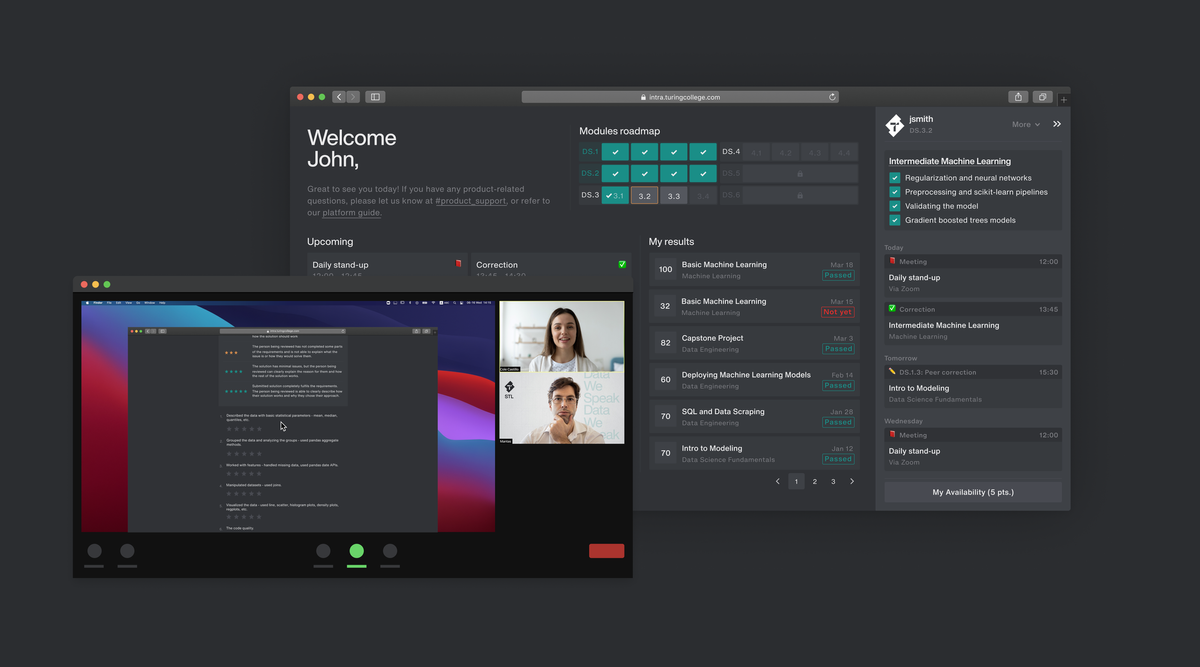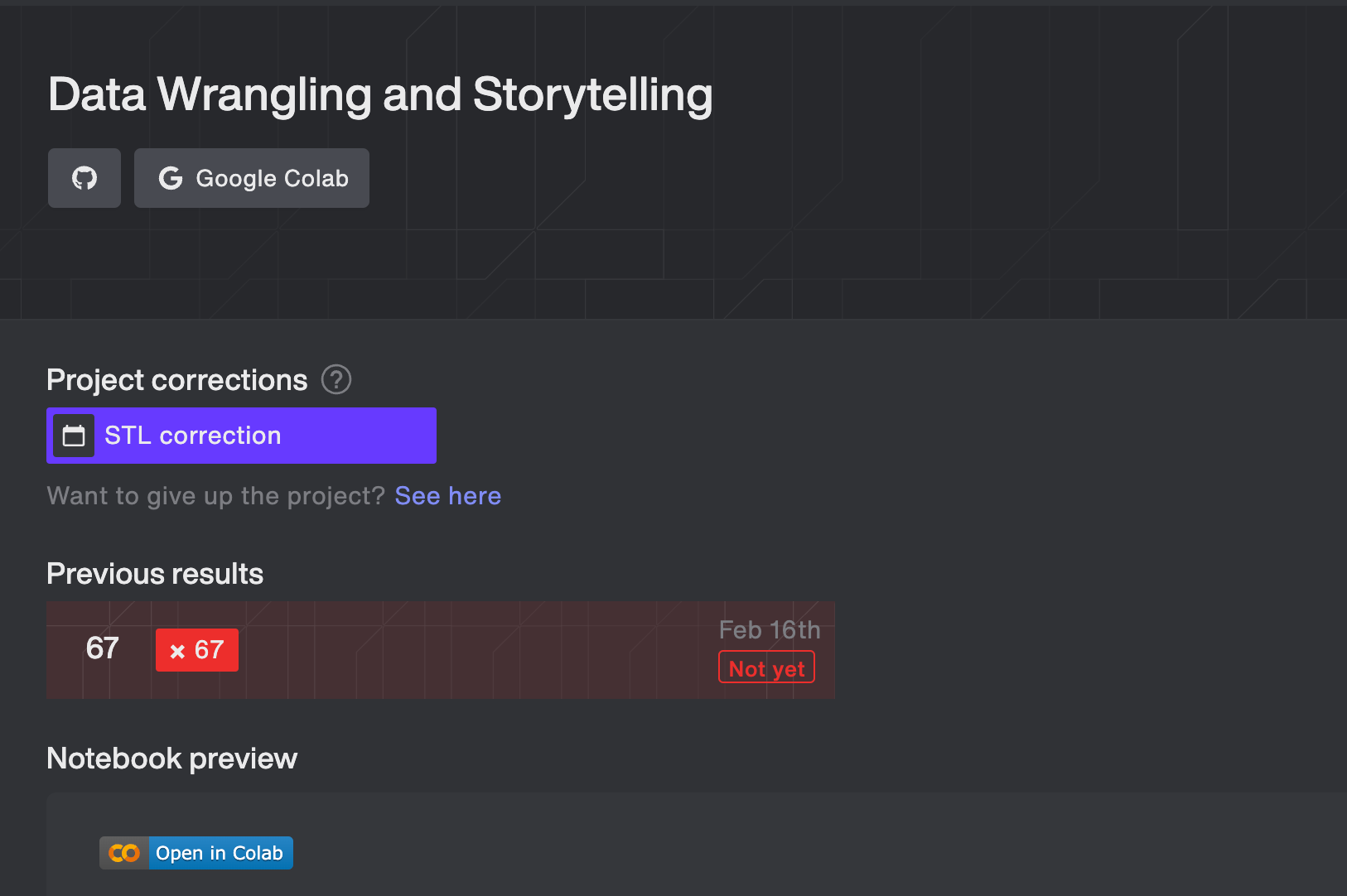1,000th Correction Performed on the Turing College Platform

Turing College has marked a lot of important milestones so far this year:
- 3 cohorts of learners have been launched,
- 70 learners from 6 different countries are currently progressing through the course,
- and, most importantly, 21% of learners have now been successfully placed in data science positions.
Clearly, Turing College is working for both our learners and the employers who hire them. But what is it about our course that makes it so effective? Well, one of the elements of our program that learners continually praise as invaluable is our corrections process. In particular, they love the insightful feedback and practice of presentation skills they get from this.
And we’re hitting a major milestone here too:
- This month sees us issuing our 1000th correction.
So what are Turing College corrections and what makes them so useful for our learners?
We turned to our Co-Founder, Tomas Moška, and our Head of Education, Giedrius Žebrauskas, to find out more about what corrections are and why they matter.
Ok Giedrius, please explain what Turing College corrections are:
“Our course is split into sprints, each one taking roughly 1-2 weeks. For a learner to confirm that they have learned the topics in that sprint and that they can move forward, they need to pass corrections. Most of the time, a sprint will require 1 peer correction and a correction from one of our Senior Team Leads (STL).”
“So what’s a correction? Well, it’s a 1-1 call during which the learner presents their work. The corrector's role is to ask questions to ensure the learner understands all the relevant concepts. The corrector also shares their insights about what was done well and what can be improved, and tries to fill any gaps in the learner’s knowledge.”

“Now, let’s consider the difference between a Senior Team Lead correction and a peer correction. An STL correction is meant to provide the highest level of objective feedback - they actually carry more weight in the final result which decides whether the correction has been passed.”
“Meanwhile, a peer correction is as it sounds, a correction in which a peer learner is the corrector. This focuses on slightly different benefits - it allows both learners to share their knowledge, build a better sense of community and peer learning, and to trust each other. It also gives learners a perfect opportunity to practice giving and receiving feedback in situations that they will experience in their workplace (for example, code reviews happen in quite a similar manner).”
Now let’s turn to Tomas and let him explain why corrections are so valuable to the Turing College experience:
“With corrections, you get to practice your presentation skills. You also learn how to explain your code clearly when you’re presenting. Not only that, once you’re on the corrector side, you learn how to evaluate the work of others, and provide clear and understandable feedback.”
“It’s also the flexibility of our corrections process that our learners really love. Our system provides asynchronous availability and correction scheduling. This means that all you have to do to schedule a correction is open it up on the platform and choose the time that works best for you.”
“Our system then takes care of the rest for you - picking the best corrector available at that time, scheduling a call link, sending out calendar invitations, etc. Because of that, our learners can progress through the curriculum at their own pace. If you have completed your project late Friday evening, you are free to schedule a correction on Saturday morning, as long as someone is available to correct you at that time. This gives you the freedom to manage your own time. In fact, we see that 27% of corrections are performed during the weekend. This flexibility is amazing for our part-time learners, who can easily study next to having a weekday job.”
Turing College’s corrections in numbers
As we mentioned, we’ve reached the milestone of 1,000 corrections performed. And as we’re all about the data, here’s a breakdown of our corrections so far.
- 69.2% of correction have been STL corrections;
- 30.8% of them have been learner corrections;
- Tuesday is the most popular day for corrections, with almost 20% carried out on this day;
- Friday is the least popular week day;
- Impressively, 2.7 out of every 10 corrections are carried out over the weekend, showing that our learners are a truly flexible bunch.
Making your corrections work for you
Turing’s corrections process gives aspiring Data Scientists like you a great opportunity to flex the kinds of skills that will prove instrumental to their success in the field.
You not only have to present and explain your results, but you also have the opportunity to evaluate and provide feedback on the works of others. And all this is done at a pace that fits you best. But most of all, this practice will definitely put you in good stead from day one of the data industry job that Turing College will help you find.
